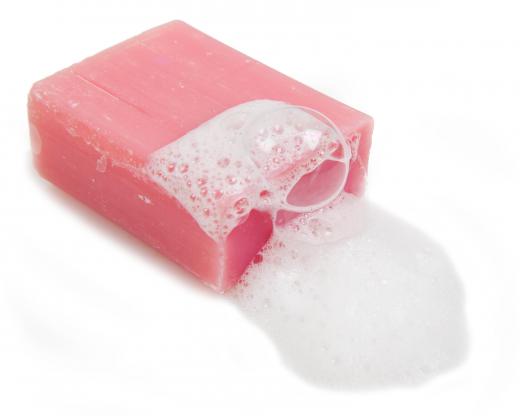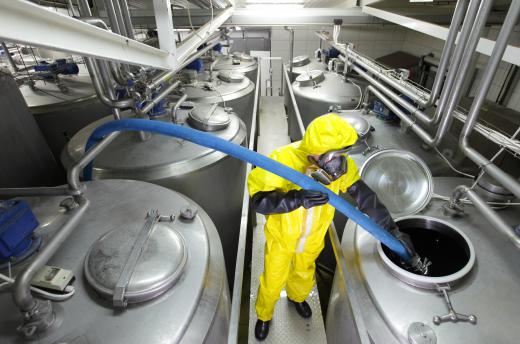Essentially, the soap manufacturing process is the combination of fats and a strong alkaline substance resulting in a chemical process called saponification. Saponification involves the splitting of a fat into fatty acids and glycerin. The fatty acids can then react with a carbonate salt in order to produce soap. Ancient soap makers used a combination of animal or vegetable fat and wood ash in order to create soap, but today, many manufacturers replace the wood ash with sodium hydroxide. Potassium hydroxide can also be used to make a softer soap, a soap that more easily dissolves in water.
The soap manufacturing process can be separated into two main groups: the kettle process and the continuous process. The kettle process produces soap in one batch at a time while the continuous process makes soap continuously. Most big soap manufacturers use the continuous soap manufacturing process because it produces a more consistent product. The continuous process also creates soap faster — producing soap in about six hours compared with the four to 11 days the kettle soap-making process takes.

In the continuous soap manufacturing process, molten fat is sent into a container where hot, high-pressured water is sprayed into it. This separates the fat into its component parts. The fatty acids are then purified and sent into another container, where the alkaline substance is added. Once the soap is made, some manufacturers may whip it to incorporate air. The entire mixture is then poured into molds and allowed to cool, or it cools in large slabs that can be cut later.

The first step of the kettle soap manufacturing process is to boil the fat and the alkaline substance together. Salt is then added to allow the soap to separate from the glycerin, which sinks to the bottom of the container and is removed. Another batch of the alkaline substance is then added to the mixture in order to turn any remaining fat into soap. After this, the soap is pitched — water is added and the liquid is boiled. This causes the soap, called neat soap, to rise to the top and the water and other substances, collectively called nigre, to settle at the bottom. The soap is removed and, like soap made using the continuous method, is cooled in molds or is allowed to cool as a large slab to be cut later.
